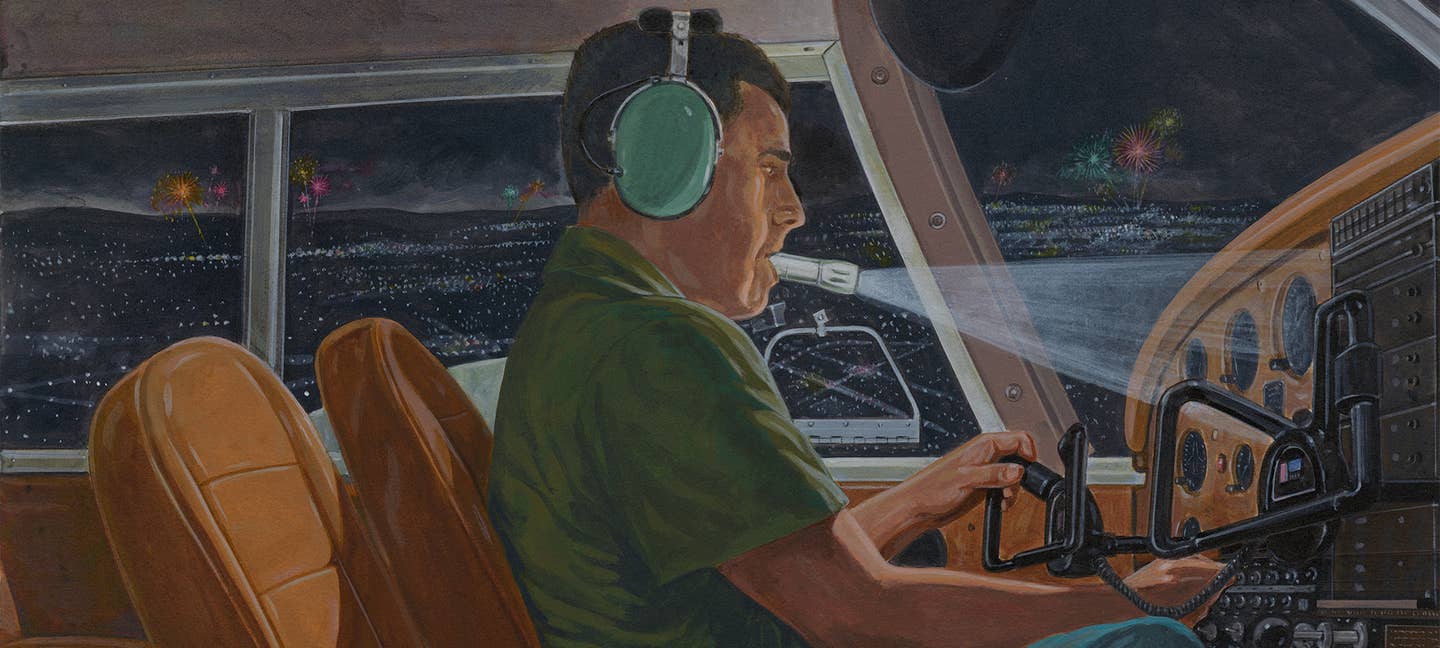
With the early morning sun just beginning to brighten the sky, my 1966 Piper Cherokee climbed from Meriden Markham Airport’s (KMMK) Runway 18. The conditions in Meriden, Connecticut, were clear, with calm winds — a perfect day for flying. Armed with a Special Flight Rules Area VFR flight plan, I turned toward my destination, Tipton Airport (KFME), adjacent to Fort Meade, Maryland, and 7 nm south of Baltimore/Washington’s Thurgood Marshall Airport (KBWI).
On July 3, the Trump National Golf Club hosted President Donald Trump, with his accompanying 30 nm presidential TFR. It was a hurdle in my path, but not enough of one to deter me from reaching my family for a reunion and trip to the Smithsonian’s National Zoo. After all, I bought the PA-28-140/160 for time building, so ground transportation was not an option on a perfect VFR day.
It was an uneventful flight down, and a fun day at the zoo. However, I had to get back to Connecticut for work the next morning. At twilight, I prepared for departure from Tipton. I had full fuel, a fully charged iPad with ForeFlight, and a fresh SFRA squawk code punched into my transponder. Holding short of Runway 28, I did my run-up and monitored the CTAF. With a local news helicopter just entering a left downwind, I announced I would be taking the runway and departing to the north. The helicopter pilot replied he had me in sight and wished me a nice flight.
With takeoff power applied and engine instruments in the green, I released the brakes. In short order, I was airborne. The night was stunning. In addition to the normal sea of shifting lights on the ground, there were at least half a dozen fireworks displays in sight. I’m embarrassed to admit that I am not sure exactly when the generator circuit breaker popped, but my first indication that I had lost electrical power was the sudden inability of the Potomac Departure controller to hear my radio calls.
I pushed the generator circuit breaker back in, to no avail. I even tried resetting the field circuit breaker, but the ammeter stayed at null. In an attempt to extend my battery life, I shut off the lights, electric fuel pump and number-two radio. Still inside the DC SFRA, I elected to monitor the assigned frequency and keep the transponder broadcasting. Just short of the SFRA’s boundary, I continued northwest toward the nearest public-use airport, Clearview Airpark (2W2).
Watching the numbers fade from my radio display, I suddenly felt terror. How would I activate the airport’s runway lights and beacon? The answer: I wouldn’t. At 1,000 feet agl, with fireworks going off in the distance, a flashlight in my mouth and ForeFlight faithfully displaying my position on my knee, I began circling, searching a seemingly endless swarm of fireflies for a 2,500-by-30-foot piece of dark asphalt.
If I didn’t see it, I planned to continue north 8 nm to Carroll County Regional (KDMW), which at least had a beacon and a runway twice as long. But with a malfunctioning plan, I wanted to get on the ground as soon as possible. When I saw six steady green lights I immediately lined up on them for a low approach, but I stayed at 300 feet agl and overflew the dark field, getting my bearings and hoping that someone was home to switch on the lights.
So, there I was, flying a makeshift pattern in what essentially amounted to instrument conditions, preparing to put down on a short, narrow runway that looked very similar to a black hole. Not knowing exactly where the treetops were, I came in high, waiting until I was directly above the runway end lights to drop in. With less than 1,000 feet of asphalt remaining, I touched down and applied maximum braking.
I shut down right there on the runway and quickly called Potomac Approach on my cellphone to relay my tale. The controller verified my tail number and said, “Thanks for letting us know. Have a good night.” The lack of interest from the controller, I believe, confirms my choice to leave the SFRA rather than make an unexpected turn back toward the Flight Restricted Zone. It seems ironic that after 9/11, New York City felt its Class B airspace was adequate protection but Washington, D.C., adopted the burdensome SFRA.
What did I learn? I keep a handheld radio and spare batteries in my flight bag now. So, next time, I will at least land with the lights on.

Subscribe to Our Newsletter
Get the latest FLYING stories delivered directly to your inbox






